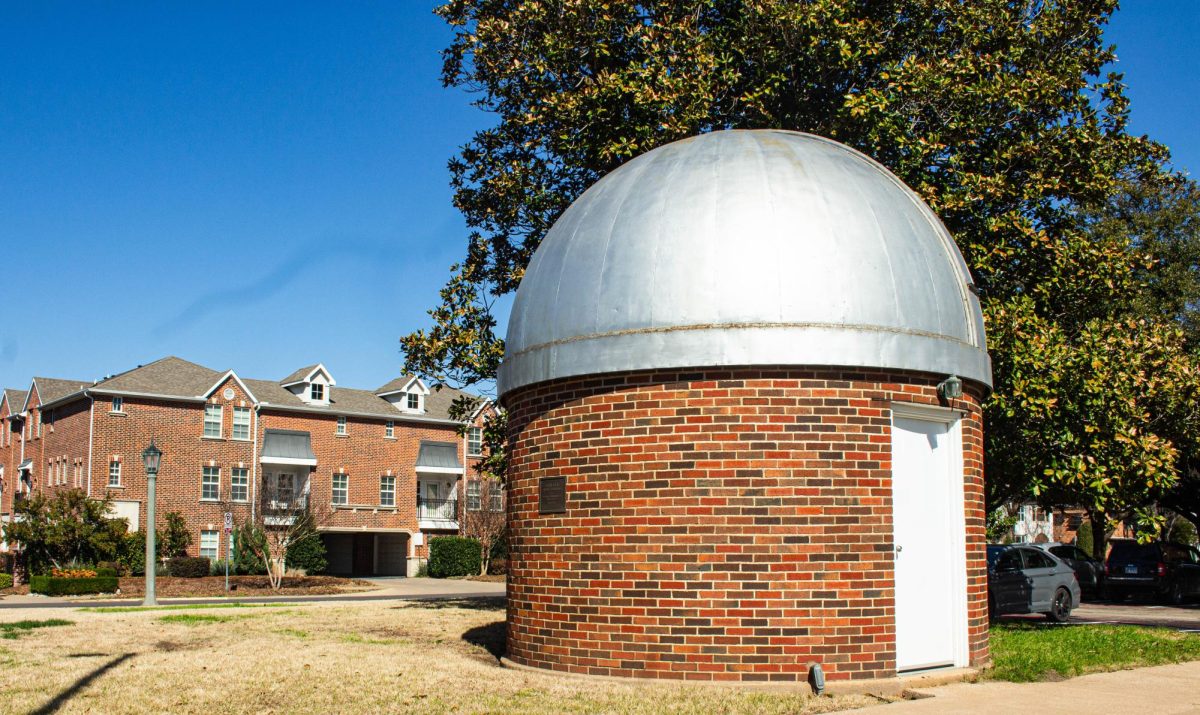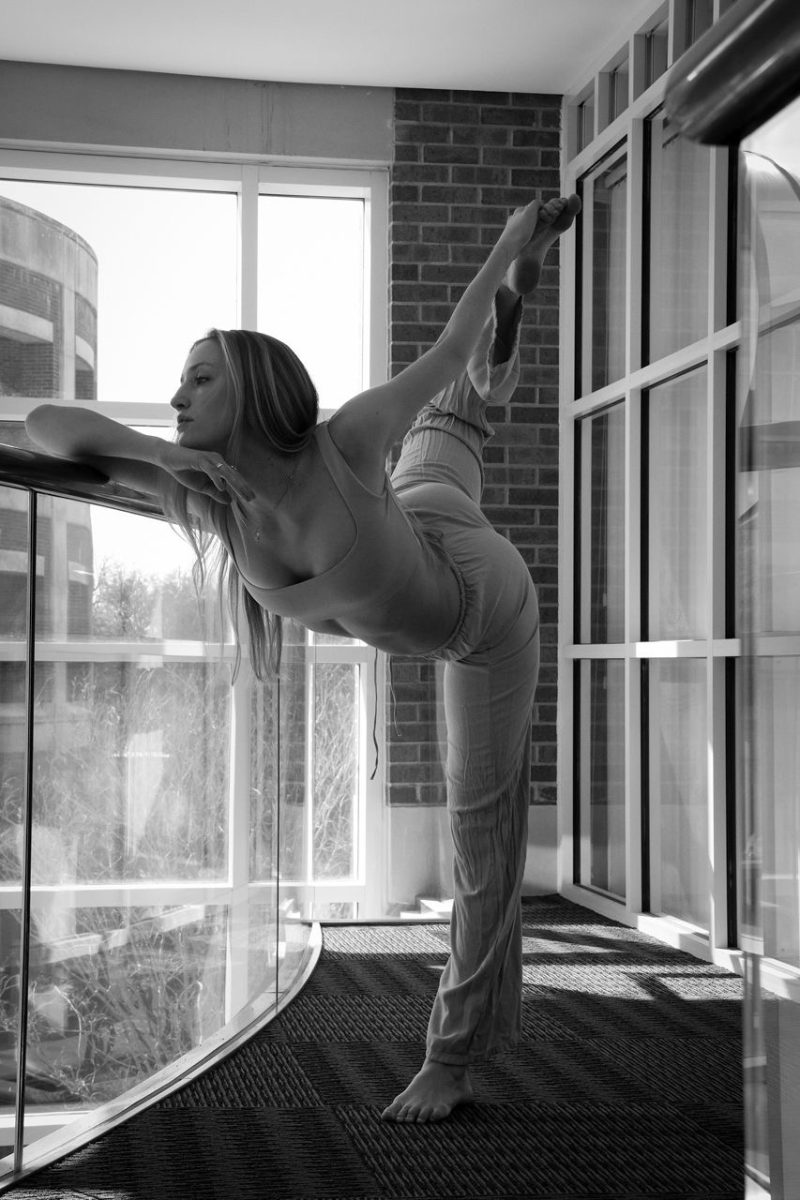This story was originally published in The DC’s Spring 2024 Issue.
The Blanton Student Observatory, designed by J.D. Boon, SMU physics professor, has been a captivating part of SMU’s campus since it was built in 1934. Though it was most frequently used by the astronomy and geology programs at SMU, students, faculty and locals alike were welcome to use the observatory when Boon opened it on clear and dry nights. Boon was the head of the physics department and was also a member of one of the most trusted sources for scientific knowledge and research, the American Association for the Advancement of Science.
The observatory gets its name from Jeptha Willis “J.W.” Blanton and Dorothy Elizabeth Brown Blanton of Dallas. The Blantons donated the telescope to SMU and funded the construction of the building. J.W. Blanton was one of the founding members of the Educational Commission of 1910 that established SMU.
The Fondren Science building now stands where the observatory was initially built. The dome-shaped structure moved to the edge of the parking lot behind Dallas Hall in 1950, said former SMU physics professor John Cotton. The observatory previously held astronomy classes and labs of students but slowly the building began to succumb to wear and tear, Cotton said.
Inside the observatory lies a 6-inch Clark Refractor telescope made in 1910, Cotton said.
There is also a broken window but the telescope is still in pristine working condition.
“It has a beautiful telescope,” he said. “The telescope is 114 years old, it just needs a new dome.”
The rotating dome on the top of the building is a perfect hemisphere and was constructed of the finest materials available at the time. The dome is now rusted and is hard to open, said Robert Kehoe, Ph.D, professor of experimental particle physics.
“We need to protect the telescope so birds and other things, and wind, and rain don’t get in on the telescope or the electronics,” Kehoe said. “I am hoping that by the spring, we can do something and maybe by the eclipse, but I think that’s probably the wrong thing to focus on getting it ready for the eclipse.”
The observatory door now remains locked, but Kehoe and a group of graduate students are planning to restore the dome of the building.
“The big issue about whether this thing can be usable in a more routine fashion, is up to the dome,” Kehoe said. “It’s a non standard size, it’s going to need some sort of a solution that would have to be machined. With the dome there is another problem that the width of the opening the telescope sees through is unfortunately way too narrow, so I think that dome has lived out its life.”
Ironically, the observatory is the smallest building on campus, yet is the highest point of the hilltop, according to the “The SMU Campus at 100: A Century of Shared Commitment.”
The building is a mystery to most students currently on campus. “I’ve never heard of any observatory before,” said SMU sophomore Alyssa Burke.
During the Eclipse
On April 8th, the physics department will set up two telescopes that will project the image of the eclipse on screens for viewing. One will be located inside Dallas Hall and the other will be by the Airline parking garage.
The DC will also host a viewing party that day on Dallas Hall Lawn.
Kehoe and Cotton recommend that students don’t view the partial eclipse with bare eyes, camera lens or binoculars. Viewers should also use solar safe viewers that comply with the ISO 12312-2 standard or watch a projection on a screen.
Students can also learn how to make and use homemade projector.










